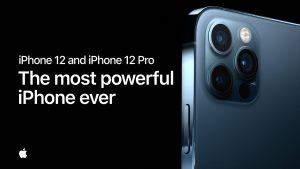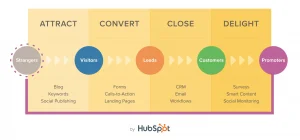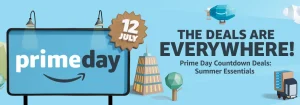In today’s crowded marketplace, where consumers are bombarded with countless messages daily, how do you make your product stand out? The answer lies in the power of storytelling. A study by Nielsen found that consumers are 55% more likely to make a purchase when they connect with a brand’s story.
That’s the power of a compelling product narrative—one that not only informs but also engages and persuades. This guide is your roadmap to mastering the art of product storytelling. It will help you create a narrative that resonates deeply with your audience and drives results.
1. Introduction to Product Storytelling
The Power of Storytelling in Marketing
Storytelling is not just about entertainment; it’s a tool that has been used for centuries to convey messages, share knowledge, and inspire action. In marketing, storytelling transforms your product from a mere object into an experience. It creates an emotional connection with your audience, making your product memorable and desirable.
At its core, storytelling appeals to the human brain’s inherent love for narratives. Our brains are wired to understand and remember stories better than abstract data. Stories evoke emotions, and emotions are powerful drivers of decision-making. When a brand tells a compelling story, it doesn’t just inform; it creates a bond between the brand and the consumer.
Take the example of TOMS shoes. The company’s “One for One” campaign didn’t just sell shoes; it sold the story of a brand that cares—one that donates a pair of shoes to a child in need for every pair purchased. This narrative struck a chord with consumers, transforming TOMS into a globally recognized brand with a loyal following. The success of this story is rooted in its alignment with consumers’ values. It also demonstrates how a product story can transcend the product itself to become a statement of social responsibility and compassion.
Why Storytelling Matters in Product Marketing
In product marketing, storytelling serves several critical functions:
- Emotional Engagement: Stories elicit emotions, and emotions drive purchasing decisions. When customers feel a connection to your brand, they’re more likely to buy and remain loyal. This is particularly important in an age where consumers are seeking more than just a product—they’re looking for brands that align with their personal values and lifestyles.
- Simplification: Complex features and benefits can be difficult to communicate effectively. A story simplifies these elements, making them relatable and easier to understand. For example, rather than listing technical specifications, a story can show how those specs translate into real-world benefits, making the product more accessible to a broader audience.
- Differentiation: In a competitive market, a unique story can be the deciding factor that sets your product apart from the rest. With countless similar products available, the narrative you craft around your product can become the key differentiator that influences a customer’s choice.
Consider how Apple differentiates its products. The story of the iPhone isn’t just about its sleek design or powerful technology—it’s about empowering creativity, connecting people, and transforming everyday life. This narrative allows Apple to charge premium prices while maintaining a devoted customer base. By focusing on the emotional and experiential aspects of their products, Apple creates a story that resonates with consumers on a personal level.

2. Understanding Your Audience
Identifying Customer Pain Points and Motivations
Every great story starts with understanding the audience. Before you can craft a compelling narrative, you need to know who your customers are, what challenges they face, and what motivates them. This understanding allows you to tailor your story to address their specific needs and desires.
To truly understand your audience, go beyond surface-level demographics. Delve into their psychographics—their values, beliefs, and aspirations. What are their fears? What keeps them up at night? What dreams do they hold dear? By answering these questions, you can craft a story that speaks to their deeper motivations.
Consider the example of HubSpot, a leader in inbound marketing. HubSpot recognized that its audience—marketers and sales professionals—struggled with attracting and converting leads. By addressing these pain points directly in their product story, HubSpot was able to position itself as the ultimate solution for inbound marketing challenges. They didn’t just sell a software solution; they sold the idea of transforming marketing from a disruptive force into a helpful, inbound approach that aligns with customer behavior.

Developing Buyer Personas
To sharpen your focus, develop detailed buyer personas. These personas should include demographic information, goals, challenges, and buying behaviors. For instance, if you’re marketing a project management tool, your persona might be “Project Manager Pat,” a seasoned professional who needs to keep remote teams aligned and productive.
Analyze customer data to identify trends and patterns. Create a detailed profile for each persona, complete with a name, background, and story. This will help you visualize your audience and create more targeted, effective narratives.
By having a clear persona in mind, you can craft a product story that speaks directly to Pat’s needs—perhaps highlighting how your tool facilitates seamless communication and task management across distributed teams. This approach not only makes your product story more relevant but also more persuasive, as it directly addresses the pain points and goals of your target audience.
3. Crafting a Compelling Product Narrative
Creating a Clear and Concise Value Proposition
Your value proposition is the cornerstone of your product story. It’s a clear, concise statement that answers the question, “Why should I choose your product?” A value proposition isn’t just about listing features; it’s about communicating the unique benefits your product offers and how it solves your customer’s problem.
A powerful value proposition is not just a tagline—it’s a promise of value that differentiates your product from the competition. It should address the “three Cs”: Clarity, Conciseness, and Customer-Centricity.
- Clarity: Avoid jargon and technical language in your value proposition. It should be easily understood by your target audience.
- Conciseness: Keep it short and to the point. The best value propositions are memorable because they are simple and direct.
- Customer-Centricity: Focus on the customer’s problem and how your product provides a solution. The more specific you can be, the more compelling your value proposition will be.
Take Airbnb as an example. Their value proposition—“Belong Anywhere”—is simple yet powerful. It communicates not just the ability to find a place to stay but also the promise of experiencing a destination like a local, fostering a sense of belonging wherever you go. This value proposition taps into the emotional desire for connection and authentic experiences, which are central to Airbnb’s target audience.

Using Customer Testimonials and Success Stories
Testimonials and success stories provide the social proof that can make your product story more credible and persuasive. But it’s not enough to just include quotes from happy customers; you need to weave these testimonials into your narrative.
To maximize the impact of customer testimonials, focus on stories that mirror the journey of your target audience. Highlight the challenges your customers faced before using your product, the solution your product provided, and the results they achieved. This not only demonstrates the effectiveness of your product but also helps potential customers visualize themselves achieving similar success.
Salesforce often highlights customer success stories in its marketing materials, showcasing how companies of all sizes use their CRM platform to grow their businesses. These stories are framed in a way that potential customers can see themselves achieving similar success by choosing Salesforce.

Highlighting Unique Features and Benefits
While it’s essential to highlight your product’s unique features, the real magic happens when you tie these features back to your audience’s needs. Instead of simply listing what your product does, tell a story about how these features deliver real-world benefits.
Take Tesla’s Autopilot feature, for instance. Tesla doesn’t just describe it as a self-driving technology; they tell the story of how Autopilot can make driving safer and more enjoyable by reducing the burden on the driver, thereby saving lives and reducing stress. This narrative not only highlights the feature but also aligns it with broader concerns about road safety and driver fatigue. This makes the campaign a more compelling proposition for potential buyers.

4. Strategies for Engaging Customers with Stories
Using Emotional Connections and Empathy
Emotions are at the heart of effective storytelling. When you create a narrative that taps into your audience’s emotions—whether it’s joy, fear, hope, or nostalgia—you can forge a deeper connection with your customers.
To create emotionally resonant stories, consider the emotional journey of your audience. What are their emotional triggers? How can your product help them achieve their emotional goals? For instance, if you’re marketing a wellness app, you might focus on the feelings of relief and empowerment users experience as they take control of their health.
Dove’s “Real Beauty” campaign is a textbook example. By challenging conventional beauty standards and celebrating diverse body types, Dove created an emotionally resonant story that empowered women and encouraged them to feel confident in their own skin. This emotional appeal not only boosted brand loyalty but also sparked a global conversation about beauty and self-esteem.

Building a Relatable Brand Personality
Your brand’s personality should shine through in your product story. A relatable brand personality helps humanize your product, making it more accessible and appealing to your audience.
Whether your brand is fun and quirky, serious and authoritative, or friendly and approachable, consistency is key. Your product story should align with this voice, reinforcing your brand identity and making your messaging more cohesive.
Consider Slack, which has built a brand personality that is both professional and playful. Their product story emphasizes efficiency and collaboration, but it’s told in a way that is lighthearted and engaging, reflecting their brand’s personality. This approach not only makes Slack’s messaging more relatable but also helps differentiate them from more traditional, corporate communication tools.

Creating a Sense of Urgency and Scarcity
Incorporating elements of urgency and scarcity into your product story can drive immediate action. Whether it’s through limited-time offers, exclusive deals, or emphasizing the immediate benefits of your product. These strategies can create a sense of FOMO (Fear of Missing Out) that motivates customers to buy.
Amazon’s Prime Day is a prime example. By creating a 48-hour window of exclusive discounts, Amazon generates a sense of urgency that drives a surge in sales. The story here is clear: If you don’t act now, you’ll miss out on incredible deals.

Leveraging User-Generated Content and Social Proof
User-generated content (UGC) is a powerful tool for enhancing your product story. When customers share their own experiences with your product, it adds authenticity and credibility to your narrative.
GoPro excels in this area by encouraging users to share their adventure videos captured on GoPro cameras. U the brand has built a library of UGC that showcases the product’s capabilities in real-world scenarios. These stories not only highlight the camera’s features but also create a sense of community among users.

5. Best Practices for Delivering Your Product Story
Consistency Across Channels and Touchpoints
A compelling product story needs to be consistent across all channels—whether it’s your website, social media, email campaigns, or sales presentations. This consistency helps reinforce your message and ensures that your audience receives a unified experience.
Nike’s “Just Do It” campaign is a masterclass in consistency. From their TV ads to social media posts and in-store displays, the message is always the same: “Just Do It.” This consistency has helped build a strong, recognizable brand identity that resonates across different markets and demographics.

Using Storytelling in Content Marketing and Sales Enablement
Incorporate storytelling into every aspect of your content marketing strategy. Whether you’re writing blog posts, creating videos, or designing infographics, your content should contribute to the overarching narrative of your product.
In sales enablement, storytelling can help your sales team connect with prospects on a deeper level. For example, instead of simply presenting product features during a sales pitch, a salesperson might share a success story of how a similar customer solved their challenges using the product. This approach makes the pitch more relatable and persuasive.
Measuring and Optimizing Your Storytelling Efforts
To ensure your product storytelling is effective, it’s crucial to measure its impact and refine your strategy based on data. Here’s how:
- Engagement Metrics: Track likes, shares, comments, and time spent on your content to gauge how well your audience is connecting with your stories.
- Conversion Metrics: Measure the percentage of people who take a desired action after engaging with your story, such as making a purchase or signing up for a newsletter.
- Customer Feedback: Collect qualitative feedback from customers to understand their emotional response to your story and how it influences their perception of your product.
- A/B Testing: Experiment with different storytelling elements—such as the tone, imagery, or narrative structure—to see which versions resonate most with your audience.
For example, if a particular email campaign that tells a customer success story generates higher click-through rates and conversions than others, you might consider incorporating more of these stories into your overall strategy.
6. Overcoming Challenges in Product Storytelling
Dealing with Internal Resistance
One of the biggest challenges in product storytelling can be internal resistance. Some stakeholders may prefer a more traditional, feature-focused approach to marketing. To overcome this, educate your team on the benefits of storytelling, using data and examples to show how it can drive better results.
You could share case studies of successful storytelling campaigns, such as Apple’s iPhone launch or Dove’s “Real Beauty” campaign, to illustrate the impact of a well-crafted narrative. Additionally, starting with small storytelling initiatives and gradually scaling up can help gain buy-in from skeptical team members.
Managing Limited Resources
Another common challenge is limited resources—whether it’s time, budget, or creative talent. To address this, focus on quality over quantity. It’s better to create a few high-impact stories than to spread yourself too thin across multiple channels.
Leverage existing content, such as customer testimonials or product reviews, and repurpose them into engaging stories. For example, a customer testimonial could be expanded into a full case study or a video interview, providing more depth and context to your narrative.
Conclusion
Crafting a compelling product story is both an art and a science. It requires a deep understanding of your audience, a clear value proposition, and the ability to engage customers with narratives that resonate emotionally and logically. By integrating storytelling into your product marketing strategy, you can transform your product from a simple commodity into a meaningful experience that connects with your customers on a deeper level.
Remember that great stories are not static; they evolve over time as your product, audience, and market change. Continuously measure the impact of your storytelling efforts, and be willing to adapt your narrative based on feedback and data. Whether you’re launching a new product or reinvigorating an existing one, a well-crafted product story can differentiate your brand. It will also help build customer loyalty and ultimately drive business success.
In a world where consumers are increasingly looking for brands they can trust and relate to, your product story could be the key to standing out and making a lasting impression. So, take the time to craft your story with care, tell it with passion, and watch as it transforms your marketing efforts and your brand’s relationship with its audience.





